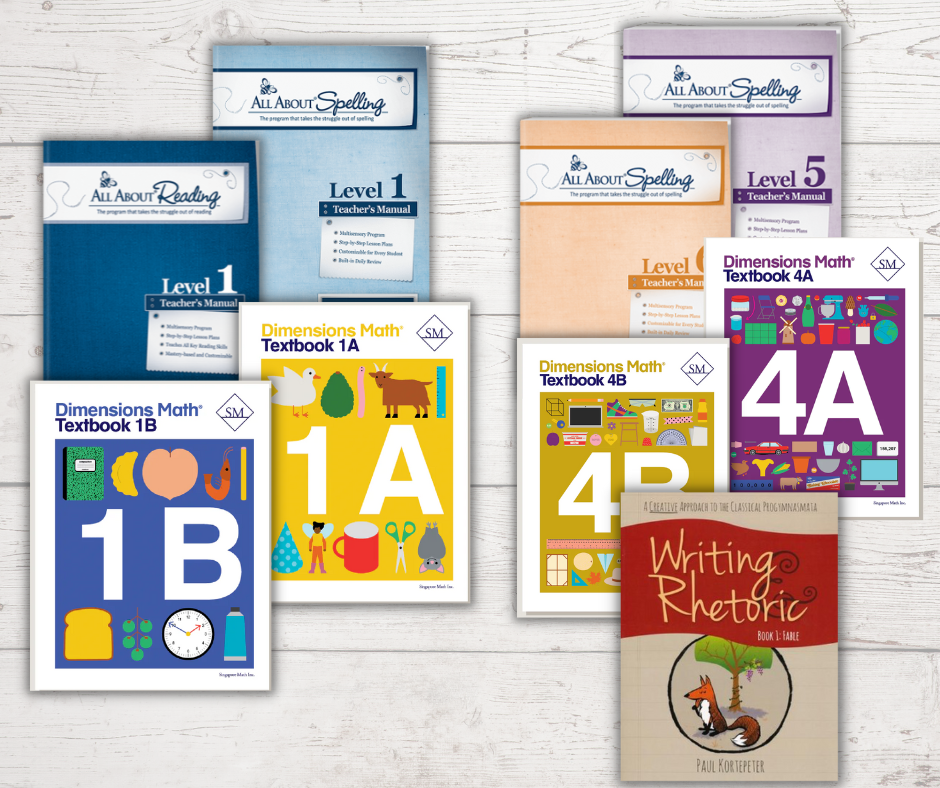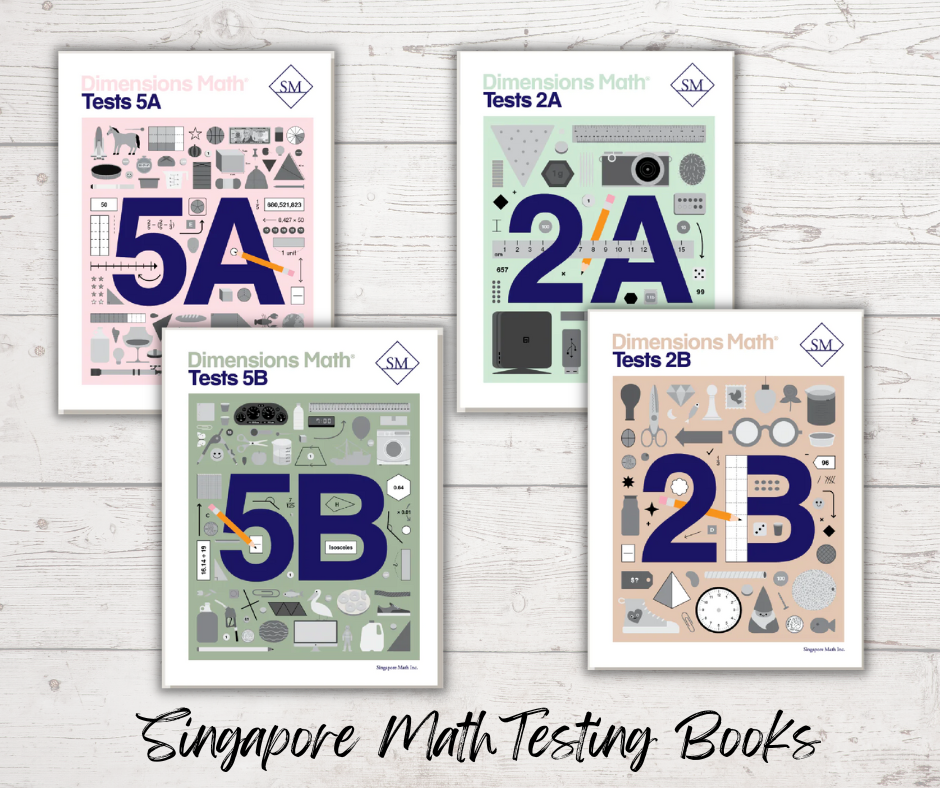We are at the end of our second year of afterschooling, and we have finally found our rhythm. In our initial year, I had a comprehensive and detailed plan with specific goals and deadlines. However, this year has been built around adaptability and flexibility, granting us the freedom and time to focus on holistic development and learning.
(If you are new to my website and to the concept of afterschooling, I am listing a few links for you to read for some background to this blog post. Refer below to Helpful links.)
Testing
My children attend elementary school, where Math and ELA (English Language Arts) are the primary focuses. Engaging in Math activities at home provides several advantages, including improved performance on standardized tests and a better understanding of concepts taught in the classroom, all while allowing for personalized learning and individualized attention. Elementary schools also offer differentiated learning opportunities, allowing students to participate in advanced Math programs based on standardized test scores. If you’re curious about the specific standardized tests my children take, here are the ones they are required to complete:
- MAP (The Measures of Academic Progress) This testing starts in First Grade. The benefit of this test is to understand better the level at which your child can take on instructions. The subjects tested are math and ELA.
- COGAT (The Cognitive Abilities Test) This test is administered starting in 3rd grade and determines if your child will take G/T(Gifted and Talented) classes in the fourth grade and above. G/T classes typically cover two grade levels above your child’s grade level. For example: If your child is in 4th grade, G/T math will cover grade 5 and some grade 6 Math.
- MCAP (Maryland Comprehensive Assessment Program) This test starts in 3rd grade and helps measure students’ knowledge and skills in alignment with the Maryland College and Career-Ready Standards.
- Lastly, the Dibels reading assessment is done at the Kindergarten level to determine where your child is in the reading proficiency spectrum.
Contrary to belief, none of these tests require additional prep work, and it is left to your sole discretion to provide added preparation at home.
Balancing Sports, Play, and Academics
As parents, we understand the importance of efficiently utilizing the limited time with our children after school. Among the umpteen number of activities vying for attention, here are a few factors that guided me in determining the time dedicated to homeschooling.
1. Encouraging Sports and Physical Activity
I allow each of my children to engage in up to two sports of their choice. All the kids attend swimming classes once a week.My 9-year-old attends tumbling classes at a Gymnastics center, my 5-year-old participated in soccer and basketball this year, and my littlest one attends a homeschool gymnastics class. By participating in sports, they not only cultivate physical fitness but also develop essential life skills such as discipline and resilience.
2. Unstructured Playtime and Emphasizing the Outdoors
Before delving into schoolwork or afterschool lessons, I prioritize ample outdoor playtime. This allows my children the freedom to explore and unwind while refreshing their minds for focused learning after a day in school. They enjoy biking, scooting, playing all sorts of made-up games in the backyard, indulging in chalk art, and helping me water our newly seeded lawn.
3. Academic Commitment: Prioritizing Schoolwork and Homework
I ensure that schoolwork takes precedence before diving into homeschooling activities. By completing their assigned tasks from school, my children establish a sense of responsibility and uphold their academic commitments. Once we have successfully accommodated these essential aspects, we embark on our homeschooling journey.
With no rigid targets in terms of weekly progress or set number of days, our overarching goal is to complete specific programs by the end of the school year.
Let’s explore the programs I implemented with my two children, starting with my kindergartener.
What my kindergartener accomplished
Kindergarten is a critical stepping stone into the world of education. These kids are starting to build foundational knowledge, so it is vital to understand what is taught in schools and how it is taught.
Reading
We use an excellent reading program called All About Reading. This year we completed Level 2 and started Level 3. There are four levels, and my wishful goal is to start level 4 before the school year begins. I have written blog posts on why we love this program and encourage you to check it out.
Spelling
Writing became an integral part of my child’s morning routine at school. Once your kid is writing, you want to provide explicit spelling instructions. For this, we used All About Spelling, completed level 1 this year, and started level 2. They have seven levels in their program. I am linking an article about the need for spelling instruction and why you should give it some attention.
Math
We love Singapore Math and have been using this for a couple of years. It is a mastery-based program that offers a rigor that is helpful for the child who would like to build strong number sense, a foundation in mathematical concepts, and emphasize and develop strong mental maths skills. My Kindergartener was placed in advanced math during the year and was learning first-grade math. Since we had already completed Kindergarten math at home before school started, we worked through Dimensions 1A and 1B. We are wrapping up 1B this month (June ’23) and will work through 2A this summer.
What my third grader accomplished
Spanish
We have decided to teach our kids a second language based on our geographical location, which might benefit them in the future, and we chose Spanish. We have been taking Spanish classes through live virtual classes through Homeschool Spanish Academy for two years now. They are an excellent program, and if you are ever looking for one, you can use this link to try a free class. My kid does one lesson a week for 25 minutes and has come a long way.
Math
We took it very slow and barely made it through Singapore Math Dimensions 4A by the end of the school year. We gained momentum after tackling 4B during the first week of summer break. If you need more time to get through a level swiftly, here is what we did.
- We learned the concepts outlined in the textbook.
- We checked knowledge by whiteboarding various problems from the textbook but did not tackle the workbook unless necessary.
- We solidified our understanding by culminating with the practice lesson of each chapter.
We are currently focusing on testing, and I cannot stress enough the benefits of incorporating them into our study routine. They provide a more precise assessment of your child’s testing skills and offer valuable insights into their grasp of the underlying concepts. I highly recommend integrating this practice for a more holistic evaluation of your child’s progress. With the summer season in full swing, we are determined to complete 5A to give us a headstart to the upcoming year.
Spelling
With my oldest, we completed Level 5 in All About Spelling and have a few lessons left in Level 6. Our goal is to get through level 7 this summer and be done with this program.
Writing
We finished Writing and Rhetoric Level 2 this year and started Level 3. In addition, the spelling curriculum has a writing component wherein we practice applying our grammar knowledge. She gets to practice writing varied sentences using the following grammar components – appositives, gerunds, subordinating and coordinating conjunctions, prepositional phrases, etc.
History and Geography
I admit that I cannot take any credit for the accomplishment in this particular area. It is entirely due to my child’s genuine passion for history and geography that she immersed herself in the stories presented across all four volumes of the renowned history curriculum, The Story of the World. Additionally, as time allowed, she worked through Memoria Press’ Geography I curriculum, further expanding her knowledge and understanding of the Middle East and Europe regions
Four things I learned this year
Needless to say, it was all worth the effort. Afterschooling is a continuous learning journey and the time spent is worth all the effort. I have written a full blog post on why we need to engage in our child’s education even if they go to school full time. And with that, I’d like to conclude with four things I learned that benefited us well.
1. Prioritizing the curriculum
Although I had a deep desire to include literature studies and allocate more time to social studies and science, circumstances compelled me to prioritize what was most important for my kids to thrive. Sticking with the core subjects greatly benefits elementary kids who are still building foundational knowledge, so with that we focused our time and effort on math and ELA (specifically spelling, reading, and writing).
2. Adapting to a flexible learning plan
I’m thankful that I did not fret over not completing what we set out to do. We did not homeschool everyday and some weeks we went without homeschooling. When we homeschooled, we would typically do 2-3 days in the week. When the school was closed, we would homeschool like any normal homeschooler and that’s where we made up. We eventually regained lost ground and caught up with our educational goals.
3. Adopting a holistic approach:
Our educational journey took a well-rounded approach, allowing my children the freedom to pursue their individual passions and interests.
4. Recognizing the value of school experiences
It may seem like schools fall short, but the fact of the matter is that they offer unique opportunities and experiences that I, as a parent, cannot replicate. There is much to be gained from the school setting, and I appreciate the enriching aspects it has provided for my children’s education. You can read about our educational experience here.
FInal Thoughts
I hope that our experience provides insight and ideas into your own journey of being part of your child’s education. What questions do you have? Leave a comment below.
Helpful Links
Everything you need to know about afterschooling
The Program that made My four-year-old a fluent early reader
Why use a structured spelling program
The Good, The Bad, and The Ugly – Our Education Experience
Get Involved In Your Child’s Education: Unlock Their Potential



